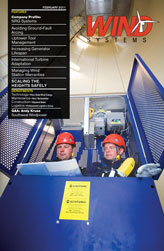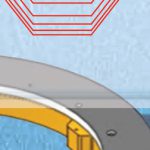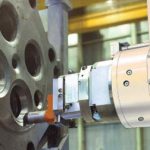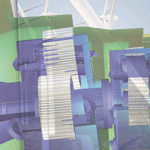“He who stops being better stops being good.” What is the relevance of this quote from Oliver Cromwell, founder of the English Republic, to the wind industry? Fully developed upgrades are a performance booster for any wind turbine generator (WTG) since the optimization of turbine components leads to significant improvements, such as the reduction of recurring faults and the increase in availability and performance. Upgrades can also prevent serious damage and help to avoid high repair costs.
The development of WTG upgrades should be an integral part of every independent service provider’s (ISP) portfolio. By changing only a few parameters of a WTG control system, a turbine can often be optimized quickly and easily. The capabilities of ISPs can be measured by their ability to master the challenges faced in the development and introduction of WTG upgrades. Turbine owners and operators should check whether their ISP has proven processes in place for developing and implementing optimizations.
Optimization Approaches
It is necessary to recognize and describe a problem at the beginning of the upgrade development process. The catalyst for such an analysis can come from many directions including the ISP, as a result of fault analyses, from on-site installers reporting about recurring irregularities within certain turbine components, or from operators suggesting possible optimizations.
The first step is to determine the cause of the problem. Neither evident nor obvious, problem analysis is typically one of the greatest challenges in the upgrade development process. ISPs that provide continuous fault analyses on contracted turbines are the most knowledgeable and have access to key data necessary to identify and analyze problems. A detailed cost/benefit analysis can determine whether the development of a turbine upgrade makes economic sense for the owner. To develop a concrete solution, an ISP should have in-house mechanical and electrical engineering knowledge. They also need access to very specific competencies from partners during the development process as well. Figure 1
A continuous documentation process is essential to seamlessly retrace every development step of an upgrade. This is important even when carrying out simple design changes, particularly if a solution unexpectedly fails to produce the desired on-site improvements. A risk assessment is also recommended, since an upgrade may lead to design changes that could affect a turbine’s operational safety.
Finally, the prototype of an upgrade must demonstrate that it is actually beneficial. This sometimes requires longer on-site testing and evaluation to ensure practical suitability, as well as sustainability.
Defining DMAIC
The path to an upgrade can be reduced to a simple formula known as “DMAIC”—or Define, Measure, Analyze, Improve, Control—which is a core process of Six Sigma. Since the 1970s Six Sigma has a proven track record in the industry as a statistical quality management system and is a recognized and successful method for defining DMAIC processes. The systematic use of such methods as part of the development of WTG upgrades is a reliable way to realize measurable improvements in turbines. Decision makers should not only check whether ISPs use such systems for development processes, but also whether or not they support them with further quality assurance measures.
Critical Situations
Turbines containing three-point bearings provide an excellent upgrade example. With the traditional bearing configuration, grave consequences may result if the main bearing fails and the damage is not detected in time. The damage produced by the failure allows the main shaft, including the rotor, to move toward the back of the nacelle. The wind pressure acting on the rotor pushes the entire gearbox up to nine millimeters backwards until the displacement of the drivetrain is finally halted by a steel block. As the gearbox rests against the steel block, the pressure of the drivetrain is transferred to the planetary carrier bearings. The result is the complete destruction of the planetary carrier bearings and, therefore, the gearbox.
Continuously monitoring the gearbox’s position prevents any serious or costly damage from occurring. Availon developed a new upgrade, mainly consisting of two inductive proximity switches, to solve this problem. Using control system error messaging, along with the remote monitoring system, they constantly monitor the position of the gearbox. If the drivetrain deviates from its original position, a fault message is transmitted to the remote monitoring system. To prevent any further damage to the gearbox and main bearing, the turbine is then immediately shut down by the control system. The turbine can then only be restarted on-site once the position of the gearbox has been inspected.
An on-site inspection can evaluate the degree of damage to a main bearing. Replacing the main bearing is usually inevitable, and already represents a considerable investment, but it is less than the cost incurred from a complete gearbox replacement. To prevent such situations from becoming critical, this upgrade is readily available.
Replacement Problems
During maintenance, replacing carbon brushes in Vestas’ V80 and V90-2 megawatt turbine generators is time consuming because of issues that arise from the original attachment of the brushes. When removing the brush attachment, other components may fall into the slip ring compartment. Due to the arrangement of the generators, the fallen components are difficult to reach without dismantling the slip ring even further. The added work contributes to lost time and higher service costs. Figure 2
A new attachment solution significantly decreases the time needed to replace carbon brushes. It also prevents parts from falling into the slip ring compartment during maintenance and repairs. In addition, the new upgrade increases the service life of the carbon brushes. The original mounting system consists of only one spring, causing the brush sides to wear unevenly during operation. As a result the brushes have a limited service life of approximately 12 months. The new mounting upgrade, coupled with a configuration change, prevents this irregular wear of the carbon brushes. Availon field trials have shown that the upgrade increases service life from 12 to 18 months, on average.
Improved Ventilation
Availon developed a ventilation management improvement for the transformer used in the Vestas 2 MW turbines. The upgrade applies to turbines installed in extreme weather locations, such as along coastal areas where transformers fail and need replacement every two years. Such frequent replacement represents a substantial investment, but is necessary because of unfavorable air circulation and contamination due to the salt in the air. The salt accumulates on the transformers and leads to corrosion of other components.
The upgrade uses special deflectors to direct the air through the nacelle so less enters the transformer room. Using a specially controlled fan, only 20 percent of the cooling air is channeled into the transformer, which is sufficient for cooling. The new air conditioning system for the Vestas 2 MW turbines aims to fully prevent the development of salt deposits in the transformers in the future, thereby increasing service life considerably.
Portable Control Box
Maintenance or other work performed in the nacelle of Vestas turbines has repeatedly been a problem for operators. In the past, one person had to operate the WTG control system from the tower base so that work could be carried out in the nacelle. With the new control box Availon has developed, this procedure is no longer required. The control box is a portable operating console connected by the Opto interface in the nacelle and can control the turbine directly from the nacelle.
Extending Blade Bearings
The life of rotor blades mainly depends on their seals. Due to constantly changing weather conditions, seals must meet specific requirements. If they don’t, it won’t be long before the blade bearing suffers damage.
Generally, a distinction is made between contact and non-contact seals. Depending on the type of relative movement of the components being sealed against each other, a distinction can be made between static (no movement), translational (linear movement), and rotary (rotating movement) seals. A blade bearing seal is a contact-sealing element with a rotational relative displacement caused by the displacement of the blades. Located on the stationary outer surface of the pitch bearing, the seal should prevent water intake and grease leakage onto the moveable inner race of the pitch bearing. Figure 3
But what happens if a seal does not work correctly and doesn’t prevent unwanted substance transfer? A damaged seal often allows a discharge of bearing grease and contaminates the equipment or ground with grease residue or dripping grease. As a result, grease must be replenished often.
A greater hazard is presented if rain enters the rotor blade bearing and mixes with the lubricant. This will shorten the life of the bearing, partially due to corrosion. Water that penetrates the seal can also cause an increase in error messages from the pitch controller and failure of pitch drives or pitch bearings. Replacing sealing profiles is nearly impossible due to their installation positions, so it is incredibly costly to fix the issue. To avoid such problems, a rotor blade bearing seal must be protected against environmental influences. The solution is a cover, or sealing hood, that meets the following special requirements:
• Protects the bearing against water intake;
• Is resistance to oil and grease;
• Has excellent aging resistance;
• Offers easy installation;
• Has an extra-secure seal, despite significant centrifugal forces;
• Compensates for large tolerances, and;
• Is easy to service.
The hood upgrade consists of several half shells that are glued and bolted together at the joints and positioned around the rotor blade. A tension strap positions and secures the hood profile of the cover on the rotor blade. The sealing hood is made from shapeable chloroprene with special auxiliary tools and tempering furnaces required to achieve reliable shaping. Figure 4
Dichtomatik GmbH and Availon partnered to create the hood upgrade. Headquartered in Hamburg, Germany, Dichtomatik has many years of experience in the field of sealing systems for the wind industry. Through the development of upgrades to various turbine systems, the service life of the turbines can be extended and unplanned maintenance costs reduced. The greater reliability of wind turbines will allow for continued implementation of this renewable resource in the coming years.








































